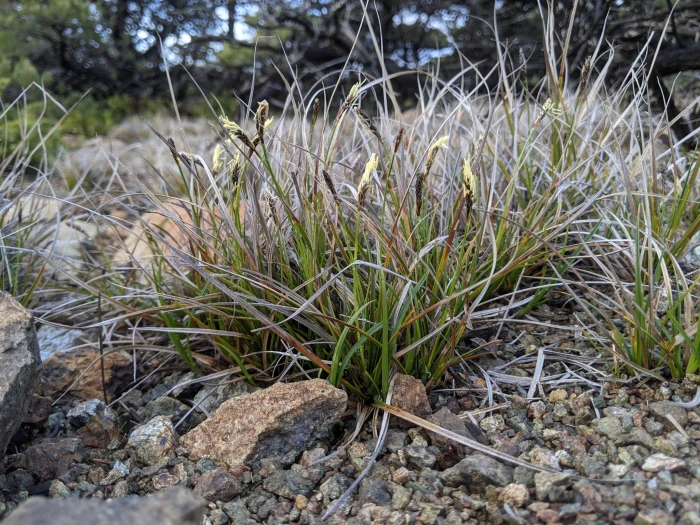Roundfruit Sedge
(Carex globosa)
Roundfruit Sedge (Carex globosa)
/
/

Ken-ichi Ueda
CC BY 4.0
Image By:
Ken-ichi Ueda
Recorded By:
Copyright:
CC BY 4.0
Copyright Notice:
Photo by: Ken-ichi Ueda | License Type: CC BY 4.0 | License URL: http://creativecommons.org/licenses/by/4.0/ | Rights Holder: Ken-ichi Ueda | Publisher: iNaturalist | Date Created: 2021-02-15T15:58:47-08:00 |

























Estimated Native Range
Climate Requirements for Fort Lee, New Jersey
| This Plant | Your Site | Plant Suitability for Your Location | ||
|---|---|---|---|---|
| • Precipitation | 9" - 93" | 48" | Aquatic | Aquatic |
| • High Temp. | 67°F - 98°F | 84°F | Your summer temperatures are normal for this plant. | Excellent |
| • Low Temp. | 17°F - 48°F | 23°F | Your winter temperatures are normal for this plant | Excellent |
This plant may not grow well at your location - your precipitation is too high.
Summary
Carex globosa, commonly known as Roundfruit Sedge, is a perennial herb native to moist meadows, seeps, and streambanks in the coastal and interior regions of Oregon and California, extending into Baja California. It typically grows to 1-2 feet in height and width, forming dense clumps. Roundfruit Sedge has narrow, grass-like leaves and inconspicuous greenish-brown flowers that appear in late spring to early summer. The plant is valued for its ability to thrive in moist conditions and its use as a ground cover or accent plant in water-wise gardens.
Roundfruit Sedge is appreciated for its low maintenance requirements and its adaptability to a range of soil types, provided they are well-drained. It is often used in rain gardens, bioswales, and as a border plant in native plant gardens. While it prefers moderate moisture, it can tolerate periods of drought once established. It is best grown in part shade to full shade, mimicking its natural understory habitat. This sedge is not known for serious pest or disease problems, but it can be susceptible to root rot if overwatered.CC BY-SA 4.0
Roundfruit Sedge is appreciated for its low maintenance requirements and its adaptability to a range of soil types, provided they are well-drained. It is often used in rain gardens, bioswales, and as a border plant in native plant gardens. While it prefers moderate moisture, it can tolerate periods of drought once established. It is best grown in part shade to full shade, mimicking its natural understory habitat. This sedge is not known for serious pest or disease problems, but it can be susceptible to root rot if overwatered.CC BY-SA 4.0
Plant Description
- Plant Type: Grass
- Height: 1-2 feet
- Width: 1-2 feet
- Growth Rate: Moderate
- Flower Color: N/A
- Flowering Season: Spring, Summer
- Leaf Retention: Evergreen
Growth Requirements
- Sun: Full Sun, Part Shade
- Water: Medium, High
- Drainage: Medium, Slow
Common Uses
Erosion Control, Low Maintenance, Water Garden
Natural Habitat
Moist meadows, seeps, and streambanks in coastal and interior regions
Other Names
Common Names: Globe Sedge
Scientific Names: Carex globosa, Carex umbellata var. globosa
GBIF Accepted Name: Carex globosa